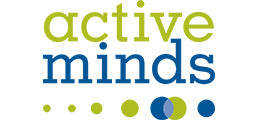A few weeks ago, we received an email from a student at Penn State University who wanted to contribute to the Flyte Fitness blog after she had read several articles on fitness and health. The student, sophomore Haley Staub, explained that she was leading an effort on behalf of the Penn State Dance Marathon (known as “THON”) to raise money to fight childhood cancer. THON culminates with a 46-hour, “no sleeping, no sitting,” dance marathon every February which is watched by 150,000 people around the world. Throughout the year, there are many charity events to raise money and create momentum for the cause. Haley wanted to share with Flyte Fitness readers an innovative approach to an upcoming 5K.
I’ll admit, I had never heard of THON before Haley wrote us. After some quick research, I discovered that THON is the largest student-run philanthropy in the world. Over the past 38 years, the organization has raised over $127 million for the Four Diamonds at Penn State Hershey Children’s Hospital. I felt humbled and honored that such an impactful organization wanted to partner with us.
We wrote about the connection between sports and philanthropy last year, during the peak of the ALS Ice Bucket Challenge phenomenon. But there is so much more to write about. Haley and I decided to write this blog together and address the changing world of charity racing, including how THON is evolving its approach.
The Evolution of Road Races
People used to run just for the sake of running. Competitive road races were few, far-between, and didn’t attract many participants. Only 55 people completed the first New York City Marathon in 1970. Last week, over 50,000 ran the five-borough race. Times have changed.
With the increase in popularity of organized races, charities began to partner with established races and created their own walking, running, and even dancing fundraising events. In 2013, the top 10 charity races raised over $1 billion for various causes, led by $380 million by the American Cancer Association’s Relay for Life.
As ubiquitous as charity races are, they are on the decline. The top 30 races raised $45 million less in 2013 than they did in 2012. Why? Part of the story is that there is a new kid on the block: adventure racing. Adventure or outdoor racing has obstacles, mud, fire, or all of the above and more. On Sunday, I participated in my first Spartan Race, a popular obstacle race, in Fenway Park in Boston. Like most adventure races, Spartan Races are not charity-centric, they are experience-centric. Although there are opportunities to contribute to causes, the main focus is taking on a challenging course and having fun. When given the choice between running a traditional race and participating in a more social and unique fitness experience, many opt for the latter. And charity races are feeling the effect.
Charities Respond
So, what can more traditional, charity-first races do to compete with the new and exciting events? For one thing, they need to get more creative. Tim Brockman, CEO and founder of Event 360, an event production company that supports charities, says, “People don’t want to do a 5K. They want to go to a neon disco blacklight 5K at night, and the vampire run, and an undie 500.”
Virtualizing Charity Races
For the first time at Penn State, organizers have taken a unique approach. The Penn State THON realized that two of the limitations to participating in their 5K fundraising events are space and time. Space was a challenge because many people who wanted to join the 5K race weren’t in State College, PA. Many were alumni, family members, or other supporters who simply were not physically in the location of the race. Lily Beatty, THON’s Public Relations Director, says, “’The Virtual Challenge’ allows us to spread our mission with no geographic boundaries.” I can appreciate this since one of the benefits of Core Flytes is the ability to work out anywhere and break through the common limitation of location.
Time was a challenge because not everyone is available at one time for one race. The solution: the “Virtual 5K Challenge.” It allows anyone who wants to show support to register, contribute, and participate from a different location at a different time. Morning, midday, or evening… anyone could run their 5K during a three-day span. All participants are part of the THON 5K umbrella, raising money to fight childhood cancer.
Dr. Sophie Penney, who oversees philanthropic leadership at Penn State, contends that just as we can achieve a “runner’s high” from participating in a physically demanding race, we achieve a “giver’s high” from donating to a cause. The Virtual 5K allows participants to achieve both “highs.”
George Sackandy is the founder of Fusionmarx, a company that facilitates digital engagement for 6,000 philanthropy clients. Sackandy says, “Fundraising has not changed in the last 100 years… how we do it has changed.” Social networking, blogging, virtual campaigns… these are all efforts to keep up with the demands of today’s fast-paced, need-to-know society, in which givers want to see their donations in action. Ultimately, he says, “people give money to people — not organizations.”
The THON 5K took place last weekend. Many participated – both at Penn State’s campus and locations all over the country. And as a result, more people got that much-needed runner’s high, giver’s high, and most importantly, contributed to a terrific cause.
We’d love to hear from you. What do you think about the evolving state of charity racing? Comment below or on our Facebook page or tweet us at @flytefitness.
Be Flyte Fit,
Jeremy Greenberg (Flyte Fitness) and Haley Staub (Penn State University)
P.S. DON’T FORGET TO SIGN UP FOR FITNESS UPDATES! CLICK THE BOX AT THE TOP OF THIS PAGE!
